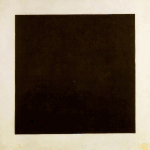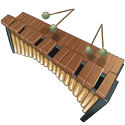|
Helianthus Annuus posted:At 3:00 he starts soloing over the Ab -> Eb -> Bb, but then at 3:32 it goes to Gm -> F -> Gm -> F to finish off the solo before going back to the Ab -> Eb -> Bb for the next verse This is incredibly helpful! Answered all my questions. Thank you so much, I always appreciate you taking the time to help me.
|
|
|
|

|
| # ? Jun 8, 2024 02:01 |
|
yw im happy to do it i have to issue a correction though, i said Ab -> Eb -> Bb was V -> I -> IV, but that's actually backwards! Treating the Eb as the tonic should have given you IV -> I -> V instead
|
|
|
|
Is transcribing a song from major into its relative minor as easy as shifting the whole number system to start on the vi? So a I-vi-IV-V in G (G-Em-C-D) would become i-VI-iv-v (Em-C-Am-Bm)? Do you do anything different with the diminished 7 when it becomes the 2, or do you just actually play those chords a lot more often in minor keys? Is this me piecing together "how the number system works" and "why it works this way in the first place" ?
|
|
|
|
Huxley posted:Is transcribing a song from major into its relative minor as easy as shifting the whole number system to start on the vi? You're right that G Em C D in G major is I vi IV V. But Em C Am Bm in E minor should be written i bVI iv v. VI in E minor would be C# major, which isn't in the key. bVI is C major, which is what you have. To prove this to yourself, play E major scale E F# G# A B C# D# E. Then play an E natural minor scale E F# G A B C D E. Compared to its parallel major, E minor has a flattened 3, a flattened 6, and a flattened 7, while the other notes are the same. Also, minor problem with your use of terms... the relationship between G-Em-C-D and Em-C-Am-Bm isn't what i would call "relative minor." Major chords can have a relative minor, but minor chords don't. Minor chords CAN have a relative major. So G -> Em, C -> Am, D -> Bm, these are all relative minors, these are fine. But Em -> C is NOT a relative major, the relative major of Em is G! Rather, in the key of E minor, the C major chord would be the "submediant" (fancy word for a vi chord in a major key or a bVI chord in a minor key). So what you've got here, all of the chords in the second progression have a submediant relationship with the corresponding chords in the first progression. The major chords become minor chords, but a m3 lower. The minor chord becomes a major chord, but a M3 lower. Notice how the relative minor of a major key is a "submediant" (vi), but the relative major of a minor key is a "mediant" (bIII). Does that make sense? So a major key has these chords: I ii iii IV V vi viio And minor has these chords: i iio bIII iv v bVI bVII (pretend that "o" is the correct symbol for a diminished chord) Helianthus Annuus fucked around with this message at 04:43 on Nov 22, 2019 |
|
|
|
And if someone asked me to transcribe I vi IV V from major into its relative minor, I would just write bIII i bVI bVII. That would be the same chords, G Em C D, but analyzed from the perspective of the relative minor of G, which is E minor. e: maybe it will help to see all the modes in the same place, instead of just looking at major and natural minor  look at how you can draw a diagonal line thru all the diminished chords this whole chart. its exactly the same with the other chord qualities too Helianthus Annuus fucked around with this message at 05:01 on Nov 22, 2019 |
|
|
|
Hold up, Huxley is talking about the chord progression itself going from the major (G) to its relative minor (e). Not the individual chords. Theory is weird and the language around it is weird, but I think one of the problems in communication here is using the term "transcribe." I think "transpose" might have been what was meant. Transcribe: Write the same thing in a different way, like transforming a sentence using synonyms Transpose: Write a thing in a different key than originally written, like translating a sentence into another language
|
|
|
|
Hawkperson posted:Hold up, Huxley is talking about the chord progression itself going from the major (G) to its relative minor (e). Not the individual chords. I always thought transposition to a different key implied that the chord qualities would remain the same because all the pitches would shift by the same amount. I looked into it. https://en.wikipedia.org/wiki/Transposition_(music)#Scalar_transpositions It turns out what you guys are talking about is called "diatonic transposition". learned something new today when you just shift all the pitches by the same amount, that's "chromatic transposition"
|
|
|
|
Thank you both for your responses! TRANSPOSE is the correct word, I think, for what I've been asked to do. Specifically on the guitar, someone handed me a song in G and said, "I love this song but I heard someone do it once in a minor key and I really loved it, can we do it that way?" I assumed keeping it in the relative key, so starting on Em, would be easier than trying to play the song starting in Gm (so I guess playing in Bb). I guess either would work, though I'm sure one or the other is easier to lazily capo/cowboy chord through.
|
|
|
|
If you did that diatonic transposition on the spot, in your head, thats really good Hux i hope my post didnt make things more complicated than they need to be. the main thing i wanted to get across was how the concept of relative major / minor is related to (but separate from) the concept of mediant / submediant so what you did was a diatonic transpotition to natural minor (aka aeolian). if you want more fun, try a diatonic transposition to the other minor modes: dorian (i vio IV v) or phrygian (i bVI iv vo) and see how these sound. you may also try to transpose to harmonic minor, although i don't know what you would call this... it's not a diatonic transposition, because harmonic minor isn't a mode of the major scale. I guess this transformation (and the other stuff we've been talking about) could be broadly categorized under the umbrella of "reharmonization"
|
|
|
|
https://www.youtube.com/watch?v=DVPq_-oJV5U cool video about how Sweet Home Alabama (chords D C G G) can be analyzed as either: G as the tonic: V -> IV -> I -> I or D as the tonic: I -> bVII -> IV -> IV And he discusses how there are good reasons to consider it from both standpoints. The chords in isolation suggest a G tonic, while the melody suggests a D tonic. Melody with G as the tonic: | 7 6 5 3 | 5 3 . . . | 7 6 5 5 | 5 . . . | Melody with D as the tonic: | 3 2 1 6 | 1 6 . . . | 3 2 1 1 | 1 . . . | Lots of popular music (including songs discussed in this very thread) can be better understood using this dual-tonic analysis! Personally, I feel G as the tonic, I guess because it's usually my job to think about chords and let someone else do the melody.
|
|
|
|
Side note... I think Adams transcription of the melody is wrong!!! I can't get his version of the melody to sound right when i play along with the original. For example i hear a G on the last sylable of "alabama" in the 2nd bar, and I hear the word "so" in the 3rd bar as an E. Melody with G as the tonic: | 7 6 5 4 | 5 1 . . . | 7 6 5 6 5 | 5 . . . | Melody with D as the tonic: | 3 2 1 b7 | 1 5 . . . | 3 2 1 2 1 | 1 . . . | I think his argument for a D tonic in the melody isn't as decisive in my transcription. Maybe I'm biased in how I'm hearing this melody. I could use a second opinion Anyway, I won't say that i dislike this melody, but I will say that I wouldn't ever write a melody like this one, which starts on the leading tone (aka natural 7th) and then descends from there. That initial D chord (IV chord) does a LOT of work to keep this from sounding like poo poo, because the F# is the major 3rd of the D chord. So even though the natural 7th is an unstable scale degree most of the time, it's stable over the IV chord, because that note is a chord tone for however long that chord lasts.
|
|
|
|
Skynyrd always thought the song was in G too. I've always heard it that way. The video's interesting, at least, in that there's often not necessarily a clear-cut answer to these questions and it can depend on your ear.
|
|
|
|
Hey music nerds, can you explain to me what's going on with drums in this song? https://www.youtube.com/watch?v=jKW4s02ib7s It's not a trick question; I chose the above for the sole reason of it being fairly simple and clean song to serve as an example of a thing I hear every once in a while but lack the vocabulary to name (and, subsequently google). So basically: you've got your four beats, later on you get hats doing standard hat things - but the thing I'm having trouble pinpointing is the other percussive sounds in between them - they go pretty fast, they're not uniform and I've heard this kind of pattern enough times it must have some name.
|
|
|
|
Lichtenstein posted:Hey music nerds, can you explain to me what's going on with drums in this song? https://www.youtube.com/watch?v=jKW4s02ib7s i cant quite tell what you're talking about. at what timestamp does your thing come in for the first time?
|
|
|
|
Helianthus Annuus posted:i cant quite tell what you're talking about. at what timestamp does your thing come in for the first time? It starts fading in at 1:00, taking about 10 seconds to reach full volume.
|
|
|
|
a lot of what you hear in electronic music is quantized, meaning the beats are all perfectly evenly divided. for example, the kick drum hitting 4 times per bar, where each beat is separated by the same amount of time but that sounds robotic to my ears, and there's a lot of subtle things that actual human drummers can do with rhythm, which enchants and delights the ear. some terms to refer to these: swing, syncopation, poly-rhythms but im not a drummer, so i can't really comment intelligently or give you more granular descriptions of what's going on rhythmically. i invite someone else to comment instead i'll give you some more stuff to listen to, if you're interested in unquantized rhythms https://www.youtube.com/watch?v=Vam7QG7cFJ8 some kind of kick rear end "chunk-it-a chunk-it-a chunk-it-a" going on when the guys get going about 30s in. it puts me in a trance! https://www.youtube.com/watch?v=3fRNtqD2UBU about 10s in when the percussion gets going, you can hear this cool swing that's characteristic of this kind of music. i find it extremely compelling, i can't help but move to this kind of stuff https://www.youtube.com/watch?v=Q1qaUALAVjc i find the rhythm hard to internalize, but its tight. these guys are on a whole different level, rhythmically https://www.youtube.com/watch?v=4A_tSyJBsRQ MESHUGGAH might post more later if i can think of anything e: https://www.youtube.com/watch?v=DTJBvIj2WkY very heavy swing in this one, starting about 20s in Helianthus Annuus fucked around with this message at 20:04 on Jan 7, 2020 |
|
|
|
Lichtenstein posted:Hey music nerds, can you explain to me what's going on with drums in this song? https://www.youtube.com/watch?v=jKW4s02ib7s Hi, drummer here. I listened to this on phone phone when you first posted it, but surprise, phone speakers aren’t great for hearing fine details, so now that I’ve gotten a chance to hear it on better speakers... This is “cool poo poo I came up with while programming a drum part so it’s not just basic four on the floor with one of three hi hat patterns” It’s not idiomatic to drums (but I guess you could argue it’s becoming idiomatic since we have to learn this poo poo programmed by guitarists/other non-musicians) I’d be curious to hear the other examples you had in mind, both for hearing more cool poo poo, and to confirm the above
|
|
|
|
Jazz Marimba posted:Hi, drummer here. I listened to this on phone phone when you first posted it, but surprise, phone speakers aren’t great for hearing fine details, so now that I’ve gotten a chance to hear it on better speakers... This, for example: https://www.youtube.com/watch?v=UE6iennwfzI It's a much busier song, but there's a part between about 35 seconds to a minute in where there's less stuff on top on that. And it's the same goddamn thing: - essentially a percussive flourish in the background of the main beat - fires way too fast for me to try figure out what's going on - uses several similar, or one differently mangled/pitched percussive sound to give it a certain quasi-melodic quality
|
|
|
|
Lichtenstein posted:This, for example: https://www.youtube.com/watch?v=UE6iennwfzI oh poo poo 2 mello! im a fan i think the general term for what you're talking about is a "groove". does it make your body want to move IRL? thats what a groove does. but there are lots of different kinds as i understand it (jazz marimba pls help) a groove is when you have a steady pulse and then some other sound that plays a repeating pattern in the spaces between the pulse you can achieve different effects by systematically offsetting those other sounds. so instead of the snare coming in exactly half way between kicks, it comes in 53% of the way, or something. that would be a kind of "swing", i think to me, swing gives the music a feeling of being unstable and stable at the same time, if that makes sense. unstable because the timing of the offset notes doesn't form simple ratios with the timing of the regular pulses. in other words, the notes dont fall on a simple grid. but its stable too, because the pattern repeats
|
|
|
|
Yeah, this confirms it, it’s “random cool poo poo idk what drums are lol”. This one’s “more idiomatic” because it’s a compressed snare with dynamics instead of random percussive sounds, and it’s actually playable (the first one isn’t), but you’ve already got a full disco/dance groove going with snare on 2 and 4 so actually playing it would be a coordination challenge for a lot of drummers. Coincidentally Shawn Crowader released a video yesterday on this concept taken to the extreme—two limbs playing an ostinato and two limbs soloing. If we were to play this song, it would be three limbs playing a groove and the fourth playing another ostinato. Both examples are quantized to the grid cuz they’re programmed by non-musicians with little to no historical background clicking buttons in a DAW. A groove is at its most basic, an ostinato—any repeated pattern. More common and easier to play ones are an ostinato comprised of smaller ostinati, e.g. in your second example it has bass drum on the downbeats, hi hat on the upbeats, and snare on 2 and 4, all with no variation. Other examples would be 1930s dance music (bass drum on downbeats, but really quiet, swing pattern on ride, snare and hi hat [with foot] on 2 and 4), or every AC/DC song (bass drum on 1 and 3, snare on 2 and 4, hi hats on every eighth note; maybe slightly different depending on the song). More complex and less common versions would be from 1970s/1980s fusion, e.g. David Garibaldi’s linear grooves with Tower of Power. You can also have grooves on other instruments, most commonly bass, often guitar, and sometimes piano/keys (thank funk for all of them!). Here’s an example on bass, one on guitar, and one on keys Bonus guitar groove with improvisation (Nile Rodgers again), and that same Adele song but it’s guitar/vox only and 100x better for it (and is hands down my favorite guitar playing ever) 4am posting crew, who else hosed their sleep schedule up lol 
|
|
|
|
I'm not sure if this is quite what you're asking, but I tried to figure out the instrument voices that make up the percussion track. It was fun, even if it's useless!Lichtenstein posted:Hey music nerds, can you explain to me what's going on with drums in this song? In your first song, I hear the thumping bass, then a percolating sort of "tikka-tikka-tik [THUMP] tap-tap" starts repeating along with it. The tikka-tikkas sound like a sample of someone slapping the fleshy part of their legs over their pants or something. The brushy tap-tap at the end of each phrase sounds like a snare to me. A little quieter, I hear a ratchet (maybe two slightly different ones?)--sounds like someone using a socket wrench. I think I'm hearing some wet-sounding snap occasionally. Maybe a sample or a synthesized sound, hard for my ear to tell a lot of the time. Lichtenstein posted:This, for example: In this second one (which I really like) you have the Boom-tik Boom-tik of kick drum and hihat. At about :23 I hear a one-time little series of clicky noises in my left ear, hard to tell what it is exactly. At around :30 it starts in with what sounds like low bit-rate samples of stomping on the floor or something like that--you can "play" a sample at different speeds and pitches, and I suspect that's what's going on with those hits to make them sort of melodic. You can also hear a muffled "clap" on beats 2 and 4 around then. The clap gets crunchier at about :47. After the slower section, at around 1:50, there's some, almost-squeaky, subtle sound playing on beats 1 & 3. 2:58 has the first set of hi-hat hisses, and they repeat a few times every other bar until the end. vez veces fucked around with this message at 22:17 on Jan 25, 2020 |
|
|
|
https://offtonic.com/theory/ check out these cool applets at the bottom my favorite is the hemiola metronome, but the interval explorer is fun too
|
|
|
|
I'm working on finding keys to chord progressions so I'm taking a look at a section of the song "Drift While You're Sleeping" by Ghosts of the Forest the section in question goes F#m > D > A > E then repeats is this in F minor? i > VI > VII > III ? or is it in A major? vi > IV > V > I Sorry if this is the wrong thread for these simple questions I just want to make sure I understand it. I know that F minor is the relative minor of A major (if I'm not mistaken) so can I essentially "choose" what key it's in (as in, it could be either F minor or A major?) EDIT: Or is it in F minor because it starts on the Fm? Kvlt! fucked around with this message at 19:36 on Feb 12, 2020 |
|
|
|
Kvlt! posted:I'm working on finding keys to chord progressions Both are technically valid, but playing the progression, F#m feels like "home" so I'd call it F# Minor. That said, listen to that section of the song, pause it, then play A. Listen to it again, pause it, play F#m. Which one sounds like it properly ends the section / feels like home? Can you link to the song w/ the timestamp of the section?
|
|
|
|
Lumpy posted:Both are technically valid, but playing the progression, F#m feels like "home" so I'd call it F# Minor. That said, listen to that section of the song, pause it, then play A. Listen to it again, pause it, play F#m. Which one sounds like it properly ends the section / feels like home? Can you link to the song w/ the timestamp of the section? The part I'm referring to is 5:00 in if the timestamp doesn't work https://www.youtube.com/watch?v=HlukEsPKgws&t=300s That's actually an excellent idea. When I do that, I agree with you, the F#m definitely sounds like "home" than an A, and it feels unresolved if you play and end on the A whereas feels complete if you end on the F#m. The tone of that section of the song lends itself to a minor sound. What do you think? I'm gonna use that strategy again in the future, thank you!
|
|
|
|
Kvlt! posted:
sorry i gotta correct this! 3 problems, assuming F#m > D > A > E is the correct transcription (sounds right to me). First, it's F# not F. Next, the flat signs are missing from the minor key analysis. Finally, the last two chord symbols seem to be swapped in both analyses is this in F# minor? i > bVI > bIII > bVII ? or is it in A major? vi > IV > I > V Kvlt! posted:Sorry if this is the wrong thread for these simple questions I just want to make sure I understand it. This is the only thread where roman numeral analysis is routinely discussed lol Anyway you're right about A major and F# minor being relatives. I would use the F# minor analysis because F# minor feels like the tonic to me. But I would also write out the A major analysis because it's easier to read, and arguably also correct.
|
|
|
|
This progression is pretty common, and it sounds very familiar to my ears. But to my eyes, both analyses look kind of weird on paper, and make me second guess them even though I know they are correct. I think that's because you've got a sequence of plagal cadences (IV - I) connecting the major chords in here, whereas roman numeral analysis is better suited to analyze music with authentic cadences (V - I). You can think of the plagal cadence as the inverse movement to an authentic cadence. I.e., E -> A is authentic, A -> E is plagal. I think all this creates the illusion that V - I is better or more correct than IV - I, but its just a different sound that will have a different effect on the listener. Helianthus Annuus fucked around with this message at 21:31 on Feb 12, 2020 |
|
|
|
In formal analysis once you get used to identifying individual chords you often move to identifying the general flow of the progression instead. Like if you’re analyzing a Beethoven symphony you don’t look at every single chord change, you often just go “this section is IV - I” even if really inside that it goes through a bunch of other stuff. I’m not in a good place to listen to stuff right now but you could make a case based on the analysis that the whole thing is just programming your ear to want to hear v - i in F# minor, and that’s why it repeats easily. VII chords in functional harmony are often heard to the ears as v chords with extensions, especially with C# showing up in the A chord just before. More common in major with vii diminished but still a thing in minor, iirc.
|
|
|
|
Hawkperson posted:In formal analysis once you get used to identifying individual chords you often move to identifying the general flow of the progression instead. Like if you’re analyzing a Beethoven symphony you don’t look at every single chord change, you often just go “this section is IV - I” even if really inside that it goes through a bunch of other stuff. yeah! its about where you start and where you end up, and a lot of the times those intervening chords are the friends you made along the way Hawkperson posted:I’m not in a good place to listen to stuff right now but you could make a case based on the analysis that the whole thing is just programming your ear to want to hear v - i in F# minor, and that’s why it repeats easily. VII chords in functional harmony are often heard to the ears as v chords with extensions, especially with C# showing up in the A chord just before. More common in major with vii diminished but still a thing in minor, iirc. thats an interesting way to think about it. i usually don't look at it that way, but its arguably a simpler analysis i usually conceive bVII -> i in a minor key to be the same as V -> vi in a major key, if that makes sense. in a major key, people call V -> vi a "deceptive cadence," and i would probably use the same name for the equivalent move in the relative minor, bVII -> i. i dont think it has a special name in the minor key context but turns out the vii (diminished) -> I cadence in a major key DOES have a special name: "the leading-tone imperfect authentic cadence" lol its probably easier to just think of that vii (diminished) chord as a rootless V7 chord, like you said. and by that logic, maybe it's also easier to think of that bVII chord as a rootless v7 chord? In F#m, the v chord is C#m7, and if you chop off that C#, you're left with E, G# B, an E major triad. That's the bVII chord in F# minor! i dont think either analysis is more correct than the other. just the opposite, i think it's valuable to be able to conceive it both ways all these technical names for cadences have a weirdly normative connotation that i dont like. "perfect" "authentic" "deceptive" etc. i think it can discourage music that deviates from expectations. but it's cool that somebody thought hard about them and gave them different names, so i still like to know what they are
|
|
|
|
Sorry for the basicness of this question, but I play and record at home and haven't ever had a reason to perform anyone else's work in public- I am familiar with how composers will put the tempo at the beginning of a piece, but what does it mean when they say a quarter note equals 100 ? Or dotted-half-note equals 80? I'll see if I can dig up a visual. Thanks a bunch!
|
|
|
|
It’s for a metronome (plenty of free ones, google even has a widget) and it refers to how many times you’d hear that rhythm/beat in one minute. Quarter note equals 120 means two quarter notes every second.
Hawkperson fucked around with this message at 18:50 on Mar 1, 2020 |
|
|
|
Hawkperson posted:It’s for a metronome (plenty of free ones, google even has a widget) and it refers to how many times you’d hear that rhythm/beat in one minute. Quarter more equals 120 means two quarter notes every second. NC Wyeth Death Cult fucked around with this message at 18:27 on Mar 1, 2020 |
|
|
|
Yep! Other part is just telling you what to count when you hear the click.
|
|
|
|
I'm playing around with this simple arpeggio chord progression in A minor, and I'm a little confused on how to label the 4th chord. The progression is: A C E (Am) G B E (Em/G or G6) C C E (C) F B E (?? FMaj7#11?) When writing a baseline, I know I could use the Lydian mode, but most of my bass lines are written around chord tones and I'm not sure what makes the most sense here. I guess I could just stick to the root and tritone and then add some color notes around them? (edit: fixed the Cm to C) Sandeep fucked around with this message at 18:32 on Apr 1, 2020 |
|
|
|
Sandeep posted:I'm playing around with this simple arpeggio chord progression in A minor, and I'm a little confused on how to label the 4th chord. The progression is: My opinion would be to emphasize the root, 3rd, and Maj7 in the bass on that F lydian, since you are using the #4/11 in the chord. The 3rd especially will give you nice tension with the #4 in the arpeggio. Maybe use the #4 as a passing tone from 5 to 3 when the arpeggio *isn't* on that note? Or you can just call it Em7 
|
|
|
|
Sandeep posted:I'm playing around with this simple arpeggio chord progression in A minor, and I'm a little confused on how to label the 4th chord. The progression is: Your Am and G6 look right to me But "C C E" looks like a C major without the perfect 5th. If you wanted C minor, you would need an Eb, not an E natural. "F B E" has a diminished 5th and a major 7th, so thats a spicy meatball! Naming this chord is going to be hard, because it doesn't have a minor 3rd or major 3rd. For it to count as an Fmaj7#11, you would need to play an A natural. I've seen people append "no3" to chords like this, so you could call it an Fmaj7#11no3 if you wanted, but that seems incredibly clumsy to me. Maybe see whether the A works in there, or if an Ab gets you the vibe you're looking for. The A will give you a stable tonic note from the natural minor, the Ab will give you a leading-tone note from A harmonic minor. If you choose not to play either note, you'll retain some ambiguity, which might be what you want. So I don't want to say that you HAVE to add the A in your performance, but to try it as an experiment to see what kind of sounds you can make. Helianthus Annuus fucked around with this message at 18:26 on Apr 1, 2020 |
|
|
|
You could also try playing notes from the E major triad to give it an E7b9 sound. That will resolve nicely back into your Am tonic.
|
|
|
|
does anyone still read this thread? theres some bad poo poo goin down on the forums the ppl in the guitar thread are gonna camp out here in case the worst happens https://discord.gg/5jCk5p music theory posters welcome
|
|
|
|
Helianthus Annuus posted:does anyone still read this thread? theres some bad poo poo goin down on the forums Thank you, was looking for something like this for here!
|
|
|
|

|
| # ? Jun 8, 2024 02:01 |
|
Thanks, I had no idea anything was going on until every thread I have bookmarked started posting about Discord. Guess I'll have to get used to that.
|
|
|
























